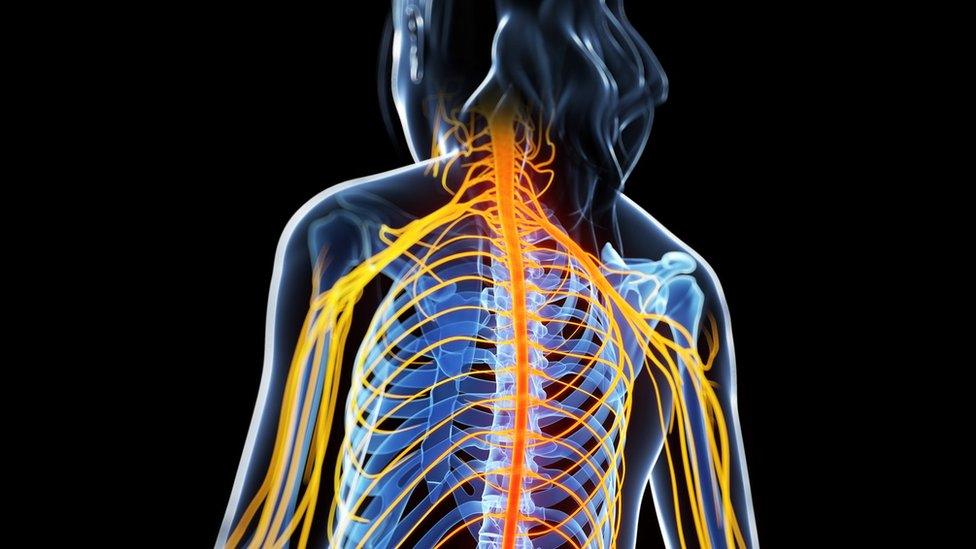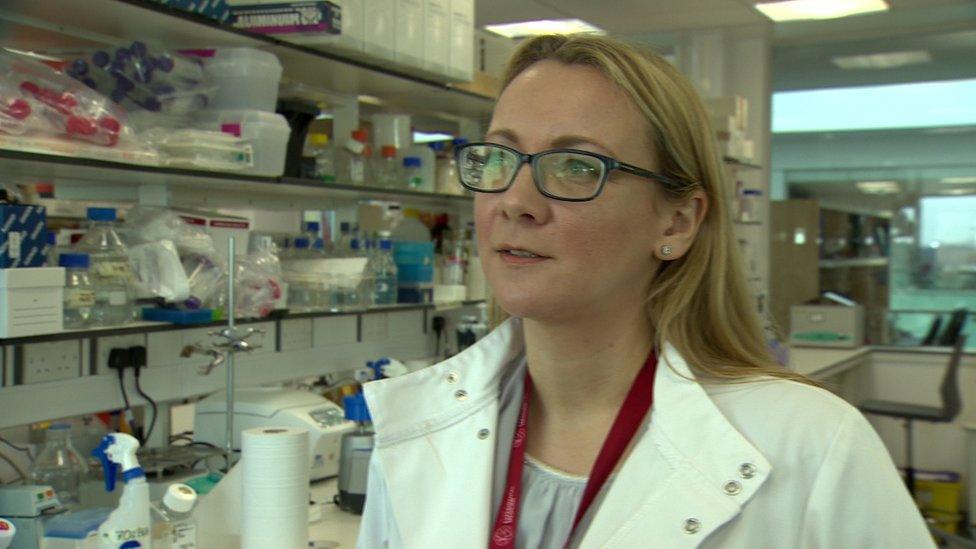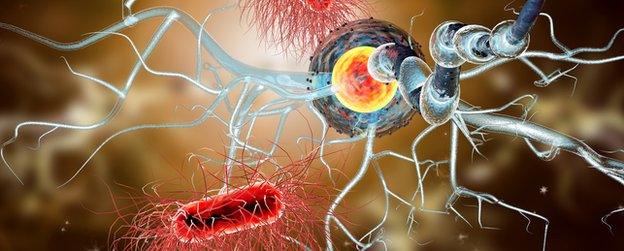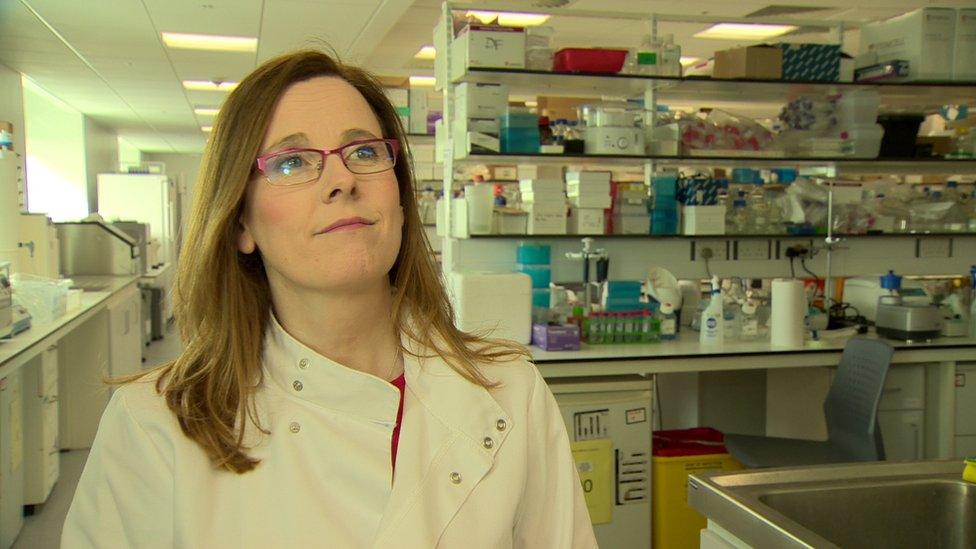Queen's University multiple sclerosis research 'a landmark'
- Published

MS causes the body's immune system to attack the lining of nerves in the brain and spinal cord
Research by scientists at Queen's University in Belfast could revolutionise life for people with multiple sclerosis (MS).
The study of how the damaged brain repairs itself is being hailed as landmark work.
In Northern Ireland, 4,500 people have MS. Across the world, 2.3 million live with the condition.
MS causes the body's own immune system to attack the lining of nerves in the brain and spinal cord.
The study, led by Dr Yvonne Dombrowski and Dr Denise Fitzgerald at the Wellcome-Wolfson Institute for Experimental Medicine, focused on specific cells from the immune system which play a key role in repairing the brain.

Dr Dombrowski said the research was a unique and fresh approach
"At Queen's, we are taking a unique and fresh approach to uncover how the immune system drives brain repair," said Dr Dombrowski.
"This knowledge is essential to designing future treatments that tackle neurological diseases such as MS in a new way - repairing damage rather than only reducing attacks.
"In future, combining these approaches will deliver better outcomes for patients."

Multiple sclerosis

In MS the protective layer surrounding nerve fibres in the brain and spinal cord - known as myelin - becomes damaged.
The immune system mistakenly attacks the myelin, causing scarring or sclerosis.
The damaged myelin disrupts the nerve signals - rather like the short circuit caused by a frayed electrical cable.
If the process of inflammation and scarring is not treated then eventually the condition can cause permanent neurodegeneration.

MS is caused by a rogue immune system which can attack parts of the brain.
When this happens, it destroys the protective coating that wraps round nerves called the myelin sheath.
Damage to the sheath prevents nerves from working correctly and means messages struggle to get from the brain to the body.
When this happens a person will have symptoms such as fatigue, blurred vision, and having difficulty walking.

Dr Denise Fitzgerald said it was an exciting, new way forward in trying to reverse damage to the brain
Dr Denise Fitzgerald from Queen's had a condition similar to MS - transverse myelitis - when she was 21 years old.
She had to learn to walk again.
"This pioneering research, led by our team at Queen's, is an exciting collaboration of top scientists from different disciplines at Cambridge, San Francisco, Edinburgh, Maynooth and Nice," she said.
"It is by bringing together these experts from immunology, neuroscience and stem cell biology that we have been able to make this landmark discovery."
She called it "an important step forward in understanding how the brain and spinal cord is naturally repaired".
Until now, medical treatment for MS could limit relapses, but could not reverse existing damage.
The discovery means researchers can develop medicines to boost particular cells and develop a new class of treatments.
Dr Sorrel Bickley from the MS Society, said the study offered an understanding of how myelin repair can be promoted, opening up new ways for treating it.
"We welcome this international collaboration led by Northern Ireland, where rates of MS are amongst the highest in the world," he said.
About 100,000 people in the UK have MS, which is an incurable neurological disease.
Most patients are diagnosed in their 20s and 30s, and almost three times as many women as men are affected.
The cause is unknown and, to date, there is no cure.
- Published22 December 2016

- Published10 June 2016

- Published18 January 2016
- Published18 January 2016

- Published1 June 2016

- Published28 October 2015
